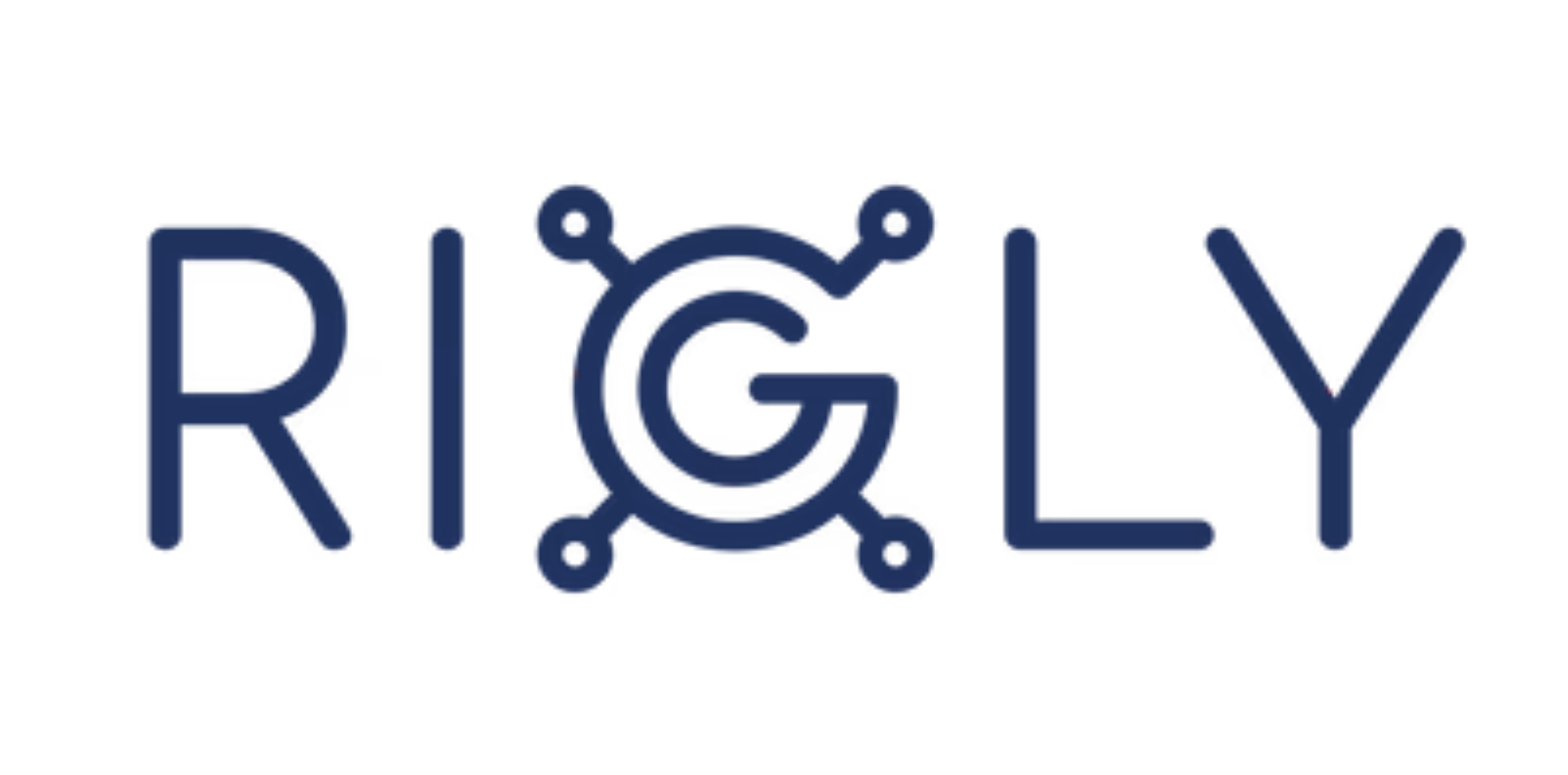Miners Want to Sell Their Hash
Miners want to sell their hash in a forward as a hedge against hashprice/revenue volatility. Rigly's marketplace allows miners to sell their hash in a forward agreement and focus on optimizing operations.

One of the most common questions with regard to Rigly's product that I get is, "Why do mining rig operators want to sell their hash power"?
The short answer: stability.
In order to really understand this answer, let's look at two financial concepts: hedging and forward contracts.
Hedging
Hedging is a frequently used term in the realm of investments. Think “hedge fund”. It can be likened to a form of insurance.
Despite its prevalence in investment circles, the concept of hedging extends beyond finance. Consider, for instance, using a seatbelt as a hedge against the risk of injury or arriving early at the bus stop as a hedge against missing the bus (The Plain Bagel, 2020).
Investors try to diversify their portfolios in such a way that if certain investments lose value, others will increase in value. The ideal net effect is an overall increase in portfolio value, but if anything not too drastic a decrease in value.
Hedging can be accomplished through a forward-dated delivery agreement, called "forwards".
Forwards
A forward is an agreement between a buyer and a seller in which both parties agree to sell a product at a set price and upon delivery at some specified point in the future.
In commodity markets, these agreements are commonly used when sellers are producing large quantities of a product and want to lock in a price for future delivery.
Let us consider Wendy the wheat farmer and Bob the baker. The price of wheat is determined by the market as a whole, and neither Bob nor Wendy knows what the price will be next year.
Price variability is an issue for Bob because if wheat price increases, then his cost per loaf of bread will increase. The same is true in the opposite direction for Wendy; if wheat drops in price, then her production costs will still be the same even though she is selling the wheat for less.
Bob and Wendy could create a forward in which Bob promises to buy 200 bushels of Wendy's wheat at $5/ bushel in exactly 1 year's time.
Again, neither Bob nor Wendy knows exactly what the market price of wheat will be in 1 year. However, by entering into a forward agreement, both of them now know the predetermined price at which they will be able to buy and sell wheat.
Consider how the Chicago Board of Trade was formed and “the origins of modern hedging in the United States”:
“Producing grain in advance, without any assurances of what price the grain could sell for, did not provide any level of certainty to farmers. They couldn’t plan for how much grain to produce, how much margin they could expect or how to resource their farms.
Then, around 1848, farmers and dealers came up with a better idea. Farmers would ask dealers if they were willing to commit to buy grain at a specific, agreed-upon price today to be paid in the future when the grain was delivered (often in the next year)” (Cargill.com, 2017).
A key feature of forwards is that money does not change hands until delivery has been completed. This is to say that Wendy will not get paid by Bob until Bob has received his wheat.
At this point, the primary issue with forwards is becoming apparent. What if in a year the price of wheat is less than what Bob agreed to buy it at from Wendy? What is to stop Bob from going to the open market and buying wheat?
If this were to happen in the tradfi world, then Wendy could take legal action to make sure that the agreement is enforced.
I hope that you can see where we are heading with this.
Before we circle back to why mining farms want to sell their hashrate, let's look closer at the volatility and uncertainty involved with mining bitcoin.
Hashprice Volatility
At first glance, it might seem obvious that hashprice is volatile when looked at in terms of $/TH/s/Day. Bitcoin price is volatile, so the block reward in dollar terms is highly correlated to bitcoin’s dollar value.
How to reduce hashprice volatility?
If we price hash in sats, then we no longer have BTC/USD price volatility and there are just three variables to consider:
- Difficulty
- Network hashrate
- Transaction fees.
We will eventually be writing in-depth articles on each of these and their roles, so make sure you subscribe to keep learning. For now, I will just briefly define each.
Difficulty: a variable target set by the network every 2,016 blocks that adjusts the probability of mining a valid block every 10 minutes.
Network hashrate: the estimated total amount of attempts/guesses to create a new block by the entire network.
Transaction fees: in addition to the block subsidy, which is cut in half every four years, miners take a fee for every transaction. Fees are determined by the market’s demand for block space.
So, network hashrate and difficulty determine how likely it is for a certain amount of hash to mine a block. This plays into hashprice because if a block can be mined with less hash, then every hash will statistically yield more sats.
Transaction fees also play into hashprice because they add on to the block reward. If fees are high, then every hash ends up yielding more sats as well.
Each one of these factors is highly variable.
Hash price is usually inversely correlated to the rate of new mining rigs coming online because as more hashrate enters the system, the difficulty increases, and the same rewards are distributed across more miners. However, hasprice is also very sensitive to extraneous events such as a winter storm or a summer heatwave causing curtailment, a new fad eating up demand for blockspace (cough ordinals), exchange flows due to a run on the price, or something like the china mining ban.
It’s graph time! Let's take a look at some graphs taken from Hashrate Index to explore further:
Network Hashrate Volatility
Here you can see the crashes in network hashrate which are then followed by further volatility to the upside.
Crashes in network hashrate are correlated to increases in difficulty:
Difficulty Volatility
As difficulty increases, sometimes we see drops in network hashrate because certain miner inefficiencies get priced out.
Miners can have either fixed or seasonal electricity prices, but there’s a cost per kWh that will price out your hash rate depending on the ASIC's efficiency, i.e. the amount of energy needed to produce a TH/s, PH/s, or even an Exahash.
As hashprice decreases, miners with more expensive operations and less efficient ASICs are the first to receive less bitcoin than it costs them to produce it which incentivizes miners to turn off those machines.
One might think that they could look at the current network hashrate and predict the upcoming difficulty adjustment. This is true to some extent, but the more blocks away from the next difficulty adjustment that the network is, the harder this is to predict. This is demonstrated by the following graph in “Analyzing Four Years of Difficulty Adjustment Forecasts” by Hashrate Index, 2022:
As you can see, the predicted adjustment is off by nearly 20 percentage points when the difficulty period begins.
Not only are network hashrate and difficulty volatile and hard to predict, but we can also see the volatility of transaction fees in the following graph:
Transaction Fee Volatility
This graph by Hashrate Index shows transaction fees as a percentage of the block reward. Looking at this from the perspective of a business whose revenue stream currently comes from more than 80% of a subsidy that is cut in half every four years, the transaction fees of the block reward makes most miners angsty.
I hope that I have thoroughly demonstrated the unpredictable nature of mining bitcoin as a business.
This is exactly why mining farms want to sell their hashrate on Rigly.
The Solution
At Rigly we offer mining rig operators the opportunity to sell their hashrate as a forward agreement to hedge against hashprice/revenue volatility.
Currently, we are auctioning off hashrate for several upcoming difficulty adjustments. This means that mining farms can lock in the price they will be able to sell their hash in a month and a half.
Let’s look at some more graphs😁.
First, consider the difficulty adjustment over a period of three months by looking at the network hashrate.
Those spikes upwards in network hashrate signify fewer sats earned by miners (sad miners). These spikes are due to the difficulty being increased which we already explored as being unpredictable.
What if the difficulty adjustments could be calculated on an open, bitcoin-only, marketplace? In other words, instead of the network adjusting every 2,016 blocks and completely altering miners’ revenue, plebs could bid on hashrate, and the fair value price of hash would be determined by the highest asking price.
This benefits mining rig owners twofold:
- The hashprice risk gets passed on to the bidders.
- Once a bid is won, the rig owner knows exactly what they will earn for that hash.
If we were to represent that with a graph, it would look something like this:
As a miner, this graph is much more friendly than the previous one. The volatility gets “smoothed” out as a function of forward contracts on hashrate.
Why Do Mining Farms Want to Sell Their Hash?
Simply put, mining farms want to sell their future hash as a hedge against hashprice volatility. We illustrated the fact that hashprice is highly variable due primarily to the unpredictable nature of how much hashrate is trying to find a block at any given time as well as transaction fee variability.
A buyer (pleb) and a seller (mining farm) can enter into a forward in which the seller sends a predetermined amount of hash to the buyer at each difficulty adjustment. Likewise, the buyer sends the seller satoshis as determined by the forward agreement.
When mining rig operators sell their hashrate on Rigly’s platform they lock in a hashprice in bitcoin and focus solely on lowering costs, increasing uptime, and upgrading their hardware.
If you would like a taste of some sweet hash generated with cheap electricity, but cannot start a farm of your own, then check out our forward-dated hashrate auctions at Rigly.
